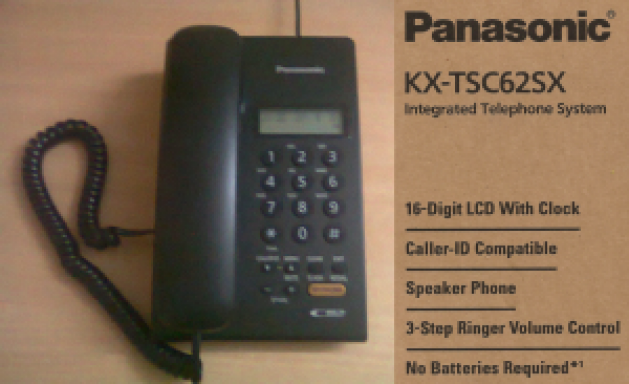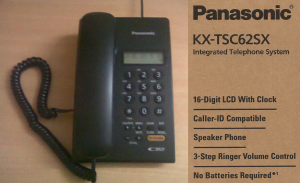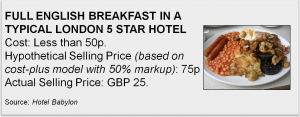Marketers are familiar with cost-plus and value-based pricing models, which are the two most commonly used methods for pricing products and services.
"What The Traffic Can Bear Pricing". Everyone understands "cost plus" pricing. Many understand "value based" pricing. But very few people (in my circle) understand that some brands can get away with exorbitant prices just because their target audience doesn't feel the pinch.
— Ketharaman Swaminathan (@s_ketharaman) May 11, 2020
In cost-plus pricing, all input costs are totalled up and a markup is applied on top to arrive at the selling price. More the number of inputs, higher the cost and, ergo, higher the price.
In value-based pricing, the selling price is set based on brand, competitor prices, perceived value of pain solved or gain created, and many other factors that are not linked to inputs / input costs.
Any given item in the market from a given company will have a price that is either based on cost-plus or value-based pricing model. This makes a direct comparison of the two prices impossible. But, as a general rule of thumb,
- Unbranded products will follow cost-plus pricing, and branded products will follow value-based pricing.
- Value-based price will be higher than if the price were dictated by costs alone.
In addition, most people intuitively believe that cost-plus and value-based prices for a given brand will be directionally identical. In other words, if a given brand has two products A and B, B will have a higher selling price than A if B has more inputs than A.
This belief is taken as true on faith.
But it turned out to be false when we recently stumbled on to some opportunities to put it to test.
#1. PANASONIC
Panasonic recently launched a new model of desk phone called KX-TSC62SX. Readers would be aware that feature-rich handsets generally need batteries and a charger to charge the batteries, as a result of which they need to be plugged in to the mains at all times. Unlike its older brethren, the KX-TSC62SX doesn’t use any batteries.
No batteries means no charger, therefore KX-TSC62SX has a lighter bill of material compared to previous models of Panasonic phones that require batteries and / or charger. According to cost-plus pricing, this model should be cheaper than other models.
At the same time, lack of batteries means no need to plug a KX-TSC62SX to the mains. As a result, KX-TSC62SX alleviates the pain inherent with conventional phones of having to cart around one more wire and be tethered to a power socket. According to value-based pricing, this model should be costlier than other models.
Ergo tussle between the two pricing models.
#2. WADESHWAR
Take the following two items in the menu of this iconic restaurant in Pune, India.
- Tea
- Tea (without sugar)
Obviously, the second item has fewer inputs than the first item. According to cost-plus pricing, it should be cheaper than the first item. But sugar is supposed to cause all kinds of health problems, so the second item that does not have sugar has a greater perceived value than the first item. Therefore, according to value-based pricing, it should be costlier than the first item.
Wadeshwar breaks the tussle between the two pricing methods by opting for value-based pricing, as you can see from the following prices:
Tea: INR 33.00
Tea (without sugar): INR 38.00
Nice example of "value-based pricing" from @wadeshwar – under "cost-plus pricing", "Tea with Sugar" would have a higher price than "Tea (without sugar)". https://t.co/nG6UjOkDkY pic.twitter.com/7PmEpT02nC
— GTM360 (@GTM360) January 19, 2018
Now, let’s come to the third and comparatively less-understood pricing method: What The Traffic Can Bear.
In this method, prices are way above what’s dictated by value-based pricing.
In value-based pricing, prices are percentage more than competing products e.g. iPhone costing 30-50% more than a Samsung smartphone.
In What The Traffic Can Bear pricing, prices are times more than competing products. This model is typically used for luxury goods with status symbol / snob appeal. Brands are able to get away with exorbitant prices in this product category just because their target audience doesn’t feel the pinch e.g. Prada bags, Patek Philippe watches, Full English Breakfast in a typical London five star hotel.
As you can see from the following exhibit, the input cost of the said English Breakfast is less than GBP 1 whereas its selling price is GBP 25.
H/T to Hotel Babylon, a book by Imogen Edwards-Jones and Anonymous about the luxury hotel industry in London, for this example.
I recently came across a rather weird case of pricing.
Clinic Plus Shampoo:
- 650 ml bottle: INR 325
- 6 ml satchet: INR 1
H/T to our customer Anshuman Shrivastava, Director Toptier Energy Services and ex-Banker, for this example.
The Unit Price works out to the following:
- 650 ml bottle: INR 0.50 per ml
- 6 ml satchet: INR 0.17 per ml
In other words, the satchet is 3X cheaper than the bottle on unit price.
I’m guessing that the brand is seeking to expand the market for shampoo in a poor country by introducing a satchet that is targeted at the “bottom of pyramid” market where the affordability is very low compared to that of the bottle’s target audience comprising affluent people.
If I’m right, this should be called What The Traffic Can’t Bear pricing model.


